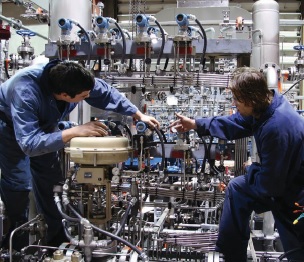Sustainability: Hard to predict the future
Michael P. Duncan | TLT President's Report March 2020
Managing and using resources efficiently will help improve quality of life.

Choosing a more sustainable approach to using lubricants is important for ourselves and future generations.
As of this writing, the final edits are being made to STLE’s 2020 Report on Emerging Issues and Trends in Tribology and Lubrication Engineering, which is the third edition. This report, and the research effort behind it, encompass the global opinions and experiences of nearly 1,000 tribologists and lubrication engineers who participated in the research as advisors and editors. Thanks to all that have made this possible!
In addition, I just gave a presentation on the highlights of the latest Trends Report at the Technische Akademie Esslingen Conference (TAE) in Germany. I was one of the invited plenary speakers on the opening day of the conference held in January, which provided STLE exposure to the global European tribology and lubrication engineering community. The TAE Conference (22nd International Colloquium on Tribology) is a biennial meeting. It is an exchange forum for industry and academia to discuss tribological challenges for our community.
During the three-day conference, I was exposed to new environmentally responsible terms from a number of European companies: sustainability, zero waste, carbon neutrality, lifecycle carbon emissions, green wash, new clean power, green energy, etc. These terms were interspersed throughout the conference. The common theme is that we need to protect the environment, conserve resources and mitigate climate change because our planet’s resources are finite, and our population continues to expand. Choosing a more sustainable approach to procuring, manufacturing, distributing, using and discarding lubricants (and other things we use and produce) will become more important for ourselves and future generations.
This environmental awareness is part of the EU’s Sustainable Development Strategy. The overall aim of the EU Sustainable Development Strategy is to identify and develop actions to enable the EU to achieve a continuous long-term improvement of quality of life through the creation of sustainable communities able to manage and use resources efficiently, able to tap the ecological and social innovation potential of the economy, and, in the end, able to ensure prosperity, environmental protection and social cohesion.*
Other notable takeaways from the TAE Conference included varying viewpoints on the implementation of electric vehicles (EVs), hybrid vehicles (dual internal combustion engine-ICE and electric) and autonomous (self-driving) vehicles, wind power efficiency from the latest (very large turbine) windmills nearing equivalency to other forms of fossil-fuel power generation of electricity, biolubricants and biofuels. Not necessarily a sustainable approach to carbon neutrality, additive manufacturing (3D printing) R&D continues to open up new opportunities in manufacturing applications and fundamental tribology in EU academic institutions. For additional information on this and future TAE Conferences, click
here.
My final thoughts on the conference and the 2020 STLE Trends Report: EVs hold a promising potential for achieving EU’s Sustainable Development Strategy if the electricity which is used to manufacture and power these vehicles is derived from renewable resources (wind, solar, hydro-electric). Even if we begin to replace ICE vehicles today with battery EVs, it will take 20-50 years before a significant impact on global warming can be achieved because of the current ICE vehicles in use today, the growing population, availability and cost of electricity, production of batteries, battery technology, electric vehicle parts and vehicle assembly facilities, governmental policy, consumer acceptance and additional wind and solar energy sources and storage. Bottom line—EVs will require new tribological solutions (drivetrain componentry, greases, gear oil additives, base stocks, lubricants and standards, surface coatings, battery technologies and effective thermal management solutions) from people like us!
Lastly, whether or not you believe in global climate change, the National Aeronautics and Space Administration (NASA) has an interesting graphic that you should look at. Click or Play the “Time Series: 1884 to 2019.”** It is a very short timeframe in the life of our planet, but it is very interesting data, nonetheless.
Mike Duncan is executive vice president of technology of Daubert Chemical Co. in Chicago. You can reach him at mduncan@daubert.com.
*Available
here.
**Available
here.